Like many other ethnic groups, the Tay people respect the elderly. The voice of the elderly is very valuable in important family and clan affairs, in village and community events. The Tay people also have many important rituals for the elderly. Corresponding to each age of Phuc, Tho, Khang, Ninh, the Tay people organize longevity celebrations for relatives. Longevity celebrations are usually held in the early spring.
In the Tay people's longevity celebration, the "Pu Luong" ceremony is a noteworthy point because of its philosophy and meaning. "Pu Luong" translated into Vietnamese means to compensate for food. In the Tay people's concept, human health is like a rice granary managed by heaven. Over time, the granary, that is, the health of each individual, will gradually decrease, and if you want it to be full, you have to compensate. The "Pu Luong" ceremony is like that. When grandparents and parents are old, their children and grandchildren will organize a "Pu Luong" ceremony to compensate for food, to increase the longevity of the elderly. The Tay people in each locality organize longevity celebrations for the elderly, which may have some different details, but most of them have something in common. The Tay people of Cao Bang organize longevity celebrations that are not too elaborate but also not too simple.
The ceremony was held from midnight, but from the evening, the house was bustling with children, old people, big people, and children. Children and relatives brought roasted pigs with offerings including rice, meat, wine, etc. The ceremony was conducted by Buddha and Tao. However, nowadays, the longevity celebration is simplified depending on the needs of each family, and only one person may be required to perform both the functions of Buddha and Tao. To prepare for the ceremony, skillful middle-aged women, trusted by everyone, were assigned to cut paper coins and do paper. In front of the altar, a basket woven from fibers symbolized a rice container. Each load of children and relatives brought had a small bag of rice poured into the basket, which was the food that relatives added to the container. A food supplement tower was also carefully woven. Among the tools of Tao, a set of calculators, seals, and mirrors were indispensable for him to reflect and drive away evil spirits and demons. An offering altar is set up at the foot of the altar with 3 trays of rice. The main tray is placed in the middle, on the tray there is a pig's head, boiled chicken, a jar of sweet wine that the family brewed with sticky rice a week before, 5 cups of wine, 5 pairs of chopsticks and rice for incense. The opposite tray is for Buddha and Tao to sit. This tray has 5 bowls: the first bowl is to place the six fates of the person who is to be made long-lived; the second bowl is to worship Nam Tao and Bac Dau - two gods who look after the fate of every person in this world; the third bowl is to worship Hoa Vuong Thanh Mau (Mother Hoa - Me Bjooc); the fourth bowl is the soul rice bowl with a chicken egg placed upright to take the fate of everyone in the family; the fifth bowl is to place the teacher's seal. There is also a tray of roasted pig brought by the son-in-law and grandson-in-law. The colorful cloth banners brought by the children and grandchildren to celebrate longevity are hung solemnly around the house. At each age of longevity, the banner is colored and written with appropriate content: at age 49, write the word "Phuc", at age 61, write the word "Tho", at age 73, write the word "Khang" and at age 85, write the word "Ninh".
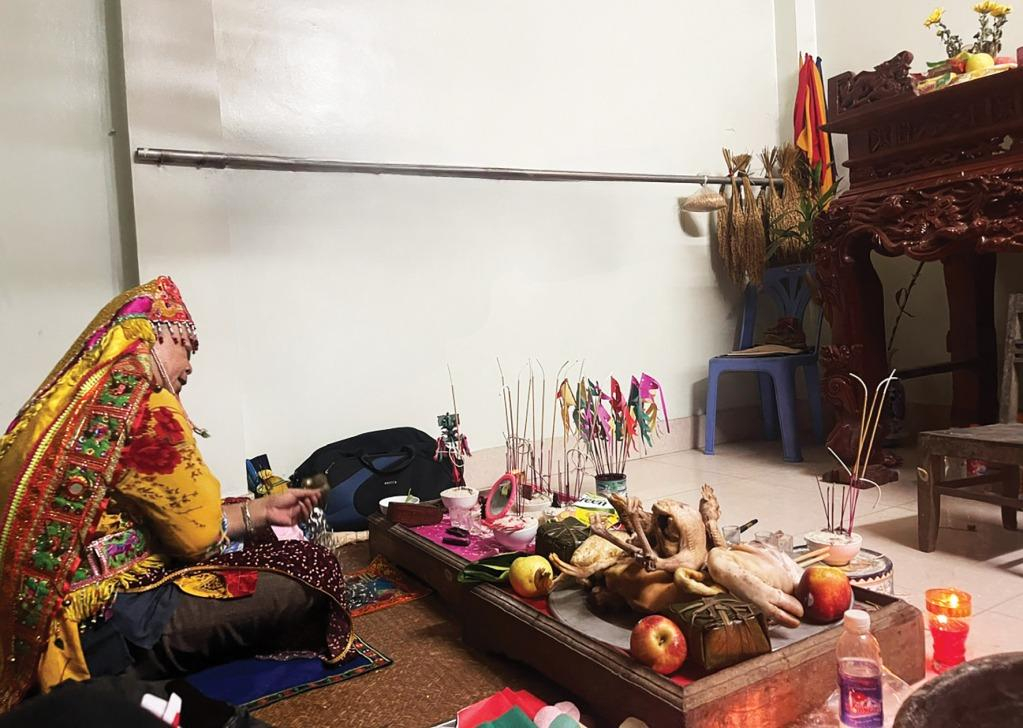
At exactly 12 o'clock at night, Master Tao began the ceremony. First, Master Tao reported to the ancestors and the gods the reason for holding the ceremony and offered offerings to the ancestors. Master Tao read the lyrics, the songs, the lyrics all had the meaning of gathering troops, the offerings to the heavens. Then Master Tao continued to direct the transfer of food. Descendants and relatives sat in rows facing each other, from the children's rice baskets spread a white cloth on top of a black cloth leading to the food replenishment tower symbolizing the bridge from the lower world to heaven. On the cloth were placed chopsticks arranged in a chi shape with votive paper money symbolizing the bridge and the road ahead. The master scooped up each bowl of rice, brought along votive paper money and a few coins, then chanted a mantra, passed it to the children and grandchildren to pour into the food replenishment tower. When the food storage was full, the remaining rice in the basket and the coins would be given by Master Tao to the children and grandchildren as a blessing from their grandparents and parents. The pavilion was then tied to the beam on the upper floor by a child of the family. Below, Master Tao sang good wishes for the person performing the ceremony to live long, be safe, have happy, healthy children and be well. After all the rituals in the house were completed, the master chose two people to bring two bamboo trees and a banana tree symbolizing the two fate trees out into the garden, choose a good place to hold the ceremony, then plant and fence it carefully to ensure that the trees will grow well in the future.
Celebrating longevity for the elderly for the Tay people is a long-standing tradition, not only showing the family's traditions and customs but also having national cultural significance, showing respect for seniors, grandparents and parents. At the same time, it also has significance in preserving, conserving and promoting the traditional culture of the nation.
Da Dang
Source



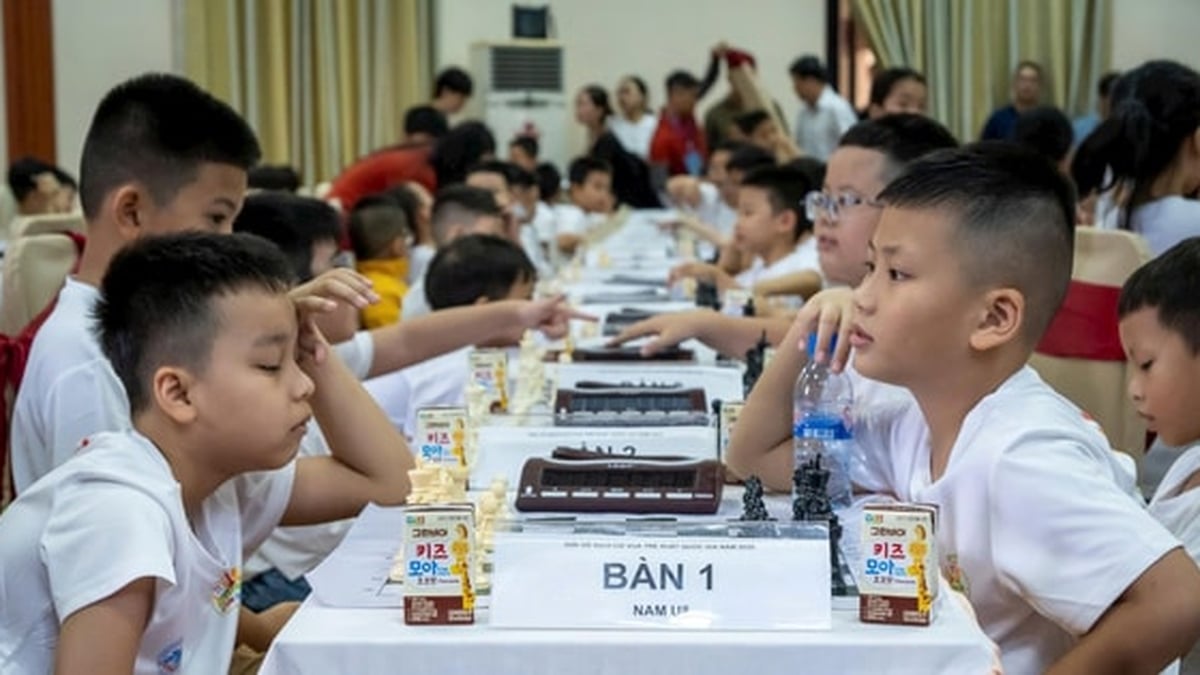

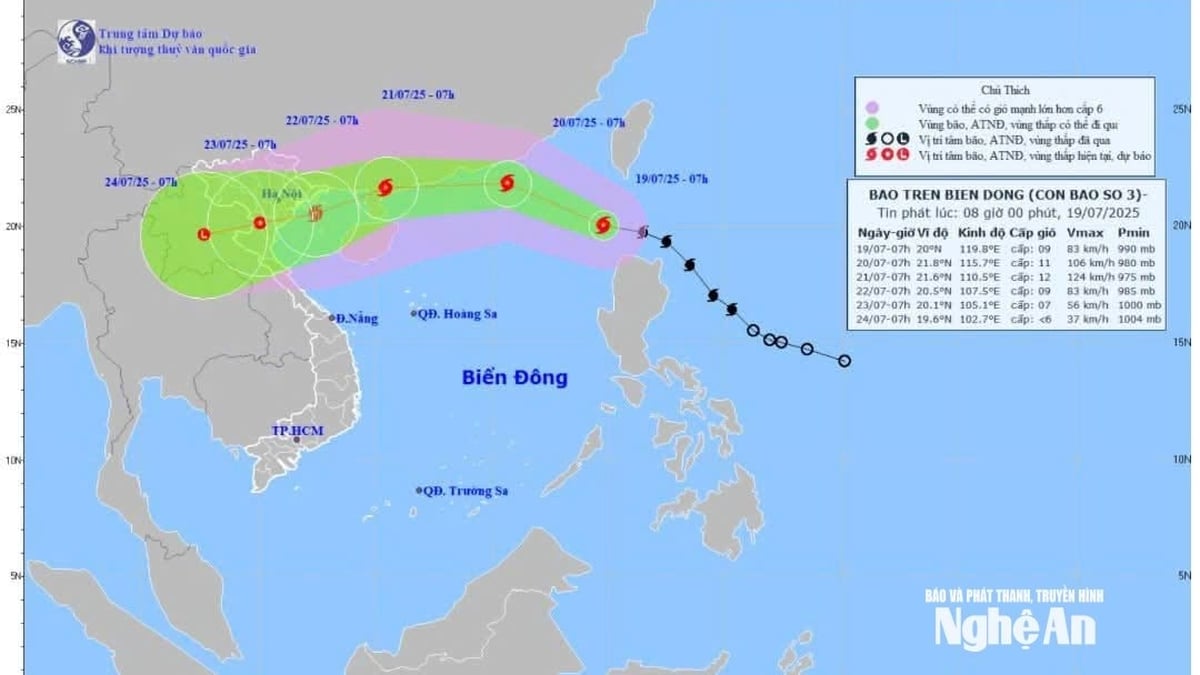
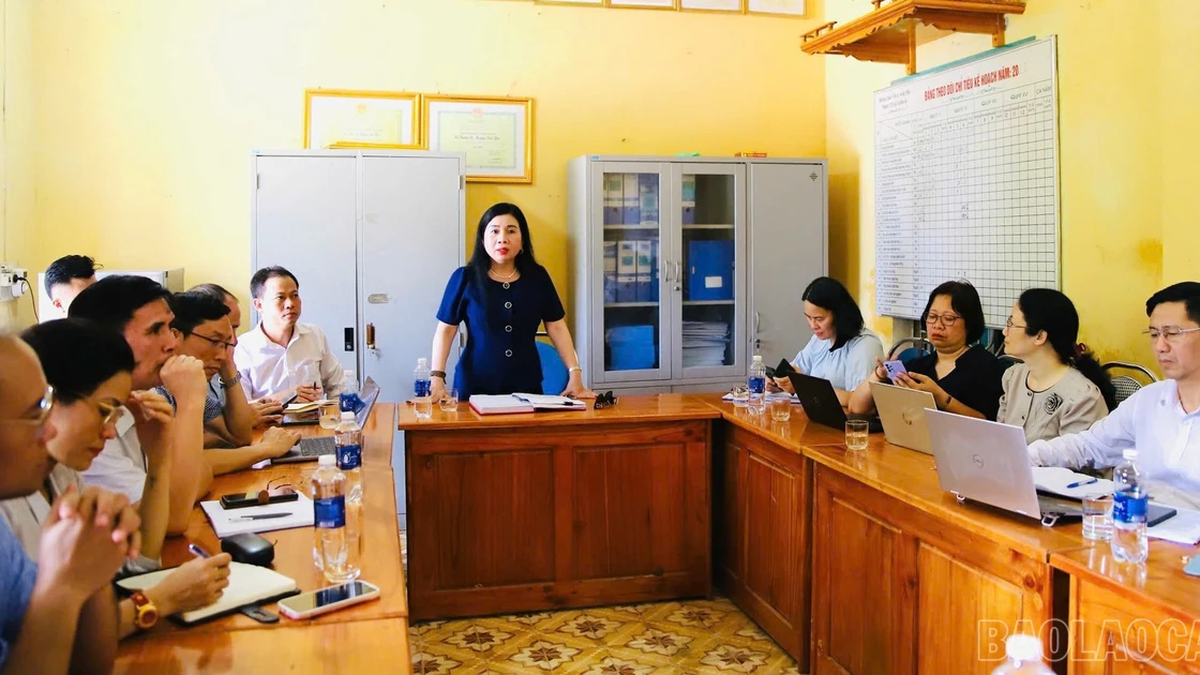
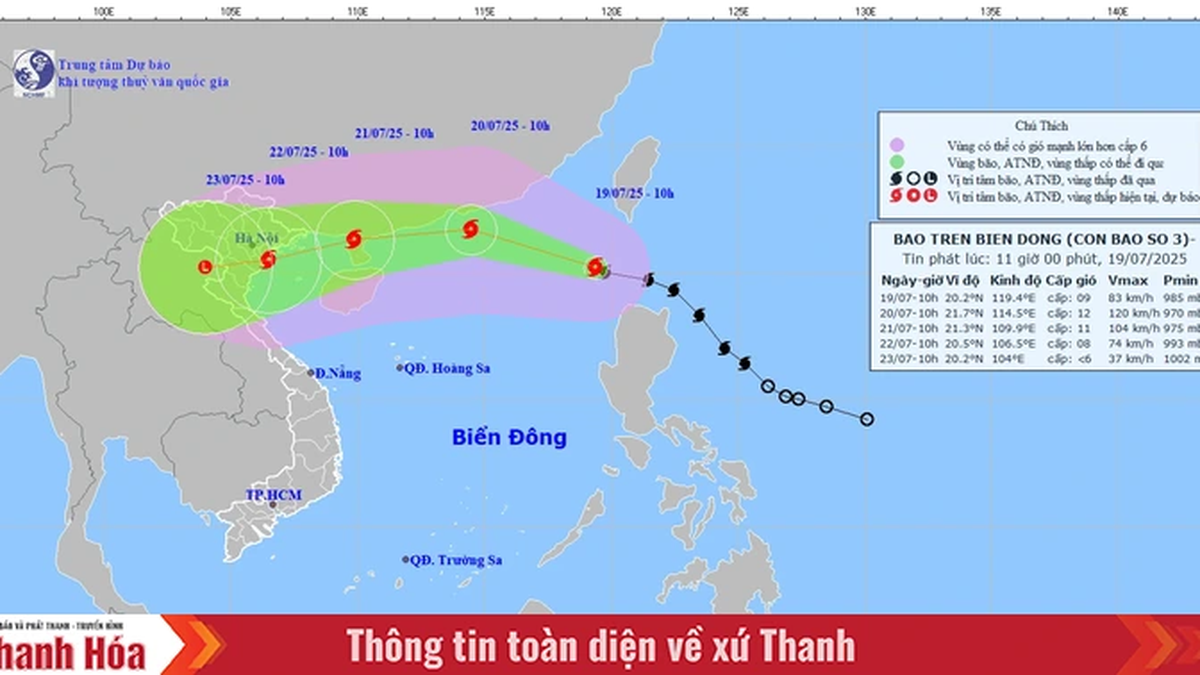
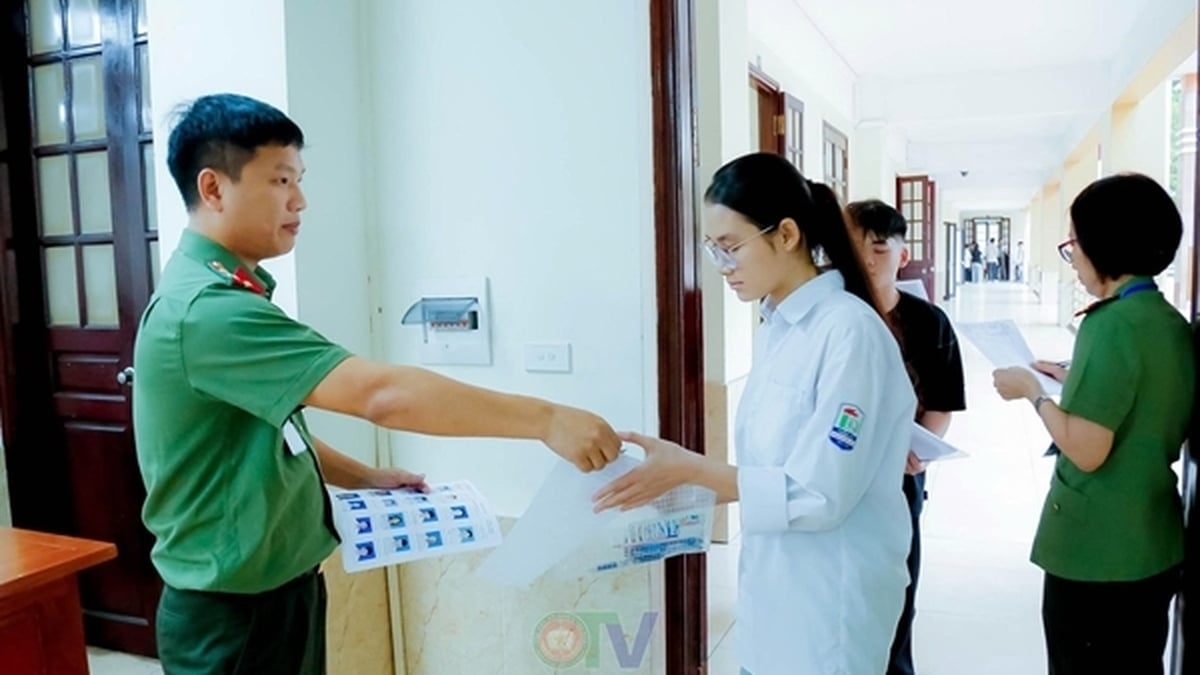
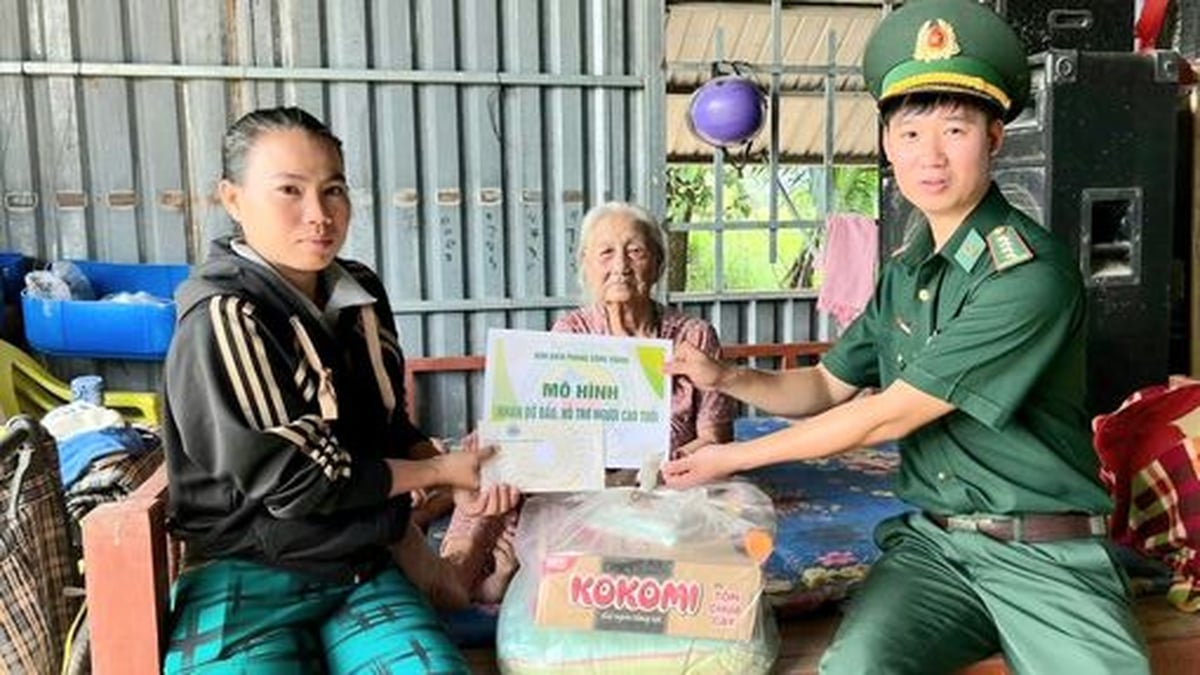
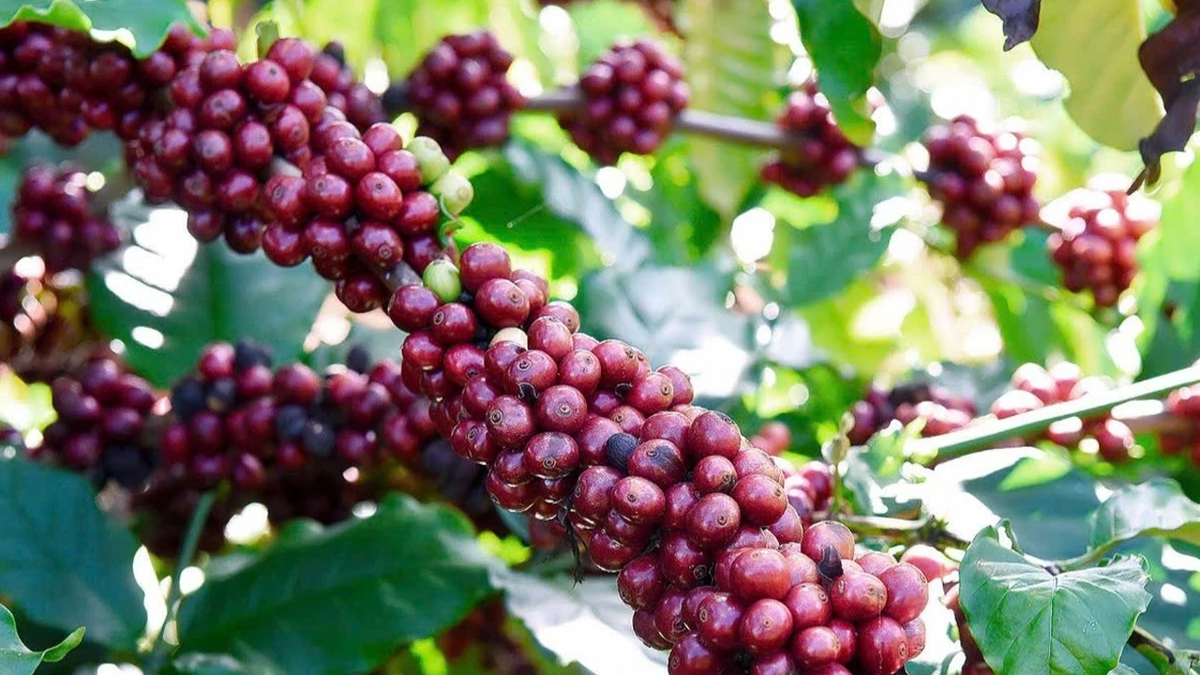
























































































Comment (0)